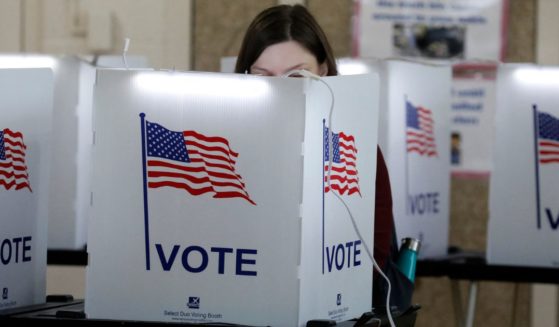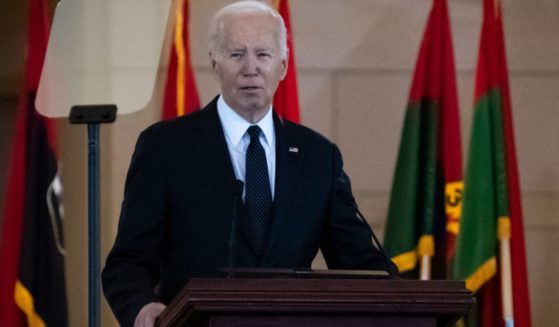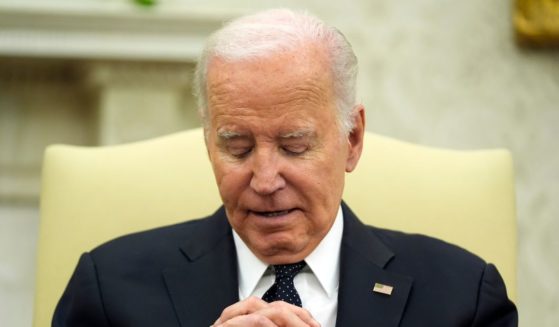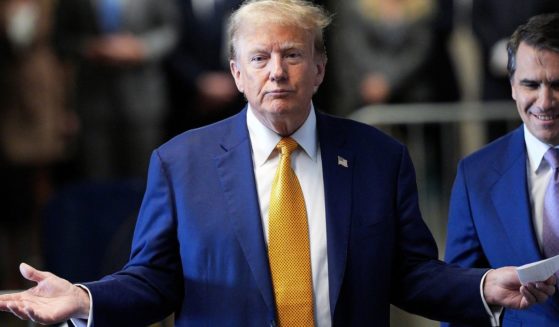Household Debt Hits New High as Americans Struggle to Stay Afloat in Biden's Economy
Under President Joe Biden, economic growth has been partly sustained by Americans spending through their savings on everyday goods, according to experts who spoke to the Daily Caller News Foundation.
Gross Domestic Product (GDP), a measure of economic growth, has remained persistently high, coming in at 2.1 percent for the second quarter of 2023, even as the Federal Reserve has attempted to tame growth through hikes of its federal funds rate.
The main contributor to U.S. GDP is consumer spending, which has managed to notch consistent increases at the expense of the savings of average Americans, experts told the DCNF.
“Consumption is about 70 percent of GDP growth, so naturally any additional consumption by households and businesses is going to add to GDP,” Ryan Ellis, president of the Center for a Free Economy, told the DCNF. “But to the extent that consumption is fueled by one time windfalls from the government, it’s basically bringing future consumption into the present. Eventually, the lack of real income to justify the higher consumption will catch up with the households and businesses.”
The Personal Consumption Expenditure, a measure of the amount Americans have spent on consumer goods and services, as a percentage of GDP has stayed slightly elevated since the second quarter of 2022, staying around 68 percent, while a number closer to 67 percent has been more common over the last decade, according to the Federal Reserve Bank of St. Louis (FRED). In the second quarter of 2023, it made up 68.1 percent of GDP.
“In this case, it’s the excess savings,” Ellis told the DCNF. “Those are still being worked down. People are drawing down those savings to counter inflation increasing their core goods and services faster than income growth.”
Personal savings have declined in recent months, falling from over $1 trillion in May to just $794.1 billion in August, paling in comparison to the nearly $6 trillion Americans had saved in April 2020 at the early stages of the COVID-19 pandemic, according to FRED.
Inflation remained high in September, rising 3.7 percent year-over-year for the month, following the same rise for the month of August. Core inflation, which excludes the volatile categories of energy and food, was even higher for the month of September, rising 4.1 percent for the year.
Inflation, as measured by the personal consumption expenditures (PCE) price index, peaked at 7.1% in June 2022. In August, PCE inflation stood at 3.5%. Are there risks that might cause PCE inflation to take longer to drop or potentially heat up again? https://t.co/AAjkTqcCxn pic.twitter.com/7PhZwGugIU
— St. Louis Fed (@stlouisfed) October 20, 2023
“In the last three months for which we have data, the growth in consumer spending has outpaced income growth,” E.J. Antoni, a research fellow at the Heritage Foundation’s Grover M. Hermann Center for the Federal Budget, told the DCNF. “Consumers have been using savings and going into debt to fuel their spending. That’s providing a temporary boost to GDP but the decline in savings is also throttling investment, the key driver of long-run economic growth. Savings have been trending down for nearly the entire tenure of the Biden administration because that’s precisely the period in which we’ve had inflation above the pre-pandemic trend.”
Real wages have declined 2.1 percent from the first quarter of 2021 when Biden took office compared to the third quarter of 2023, according to FRED.
The Biden administration has repeatedly insisted that the economy is in good shape, pointing to the president’s signature economic policy, “Bidenomics,” as the reason. Despite the insistence, many experts have pointed to the high-spending policies at the core of Bidenomics as the cause of the recent sustained high inflation.
“Alas, the U.S. savings rate has plunged back down to normal low levels today,” Chris Edwards, the Kilts Family Chair in Fiscal Studies at the Cato Institute, told the DCNF. “The low savings rate is a concern because it may indicate that Americans expect the government to bail them out if a recession or another crisis hits.”
The Fed has been keen on trying to avoid a recession, even as it keeps rates at a 22-year high. Despite this, Jerome Powell, chair of the Fed, noted at the end of the September Federal Open Market Committee meeting that an economic soft landing, meaning a slowdown in market growth without triggering a recession, was not a “baseline expectation” for the Fed.
“The high probability of recession in the near term is very troubling when coupled with the decline in savings,” Antoni told the DCNF. “People need more savings today than ever to cope with the higher cost of living, and instead, many families are headed into the next recession with less savings and more debt.”
Household debt shot up to a new high in the second quarter of 2023, with Americans collectively owing $17.06 trillion, with $1 trillion of that being held just in credit card debt.
“The notion one often hears by left-of-center analysts is that savings are bad for the economy, but this is based on faulty Keynesian theories,” Edwards told the DCNF. “Savings are hugely positive for the economy because they are the corn seed of growth. Savings fuel capital investment and expansion.”
The White House did not respond to a request to comment from the DCNF.
All content created by the Daily Caller News Foundation, an independent and nonpartisan newswire service, is available without charge to any legitimate news publisher that can provide a large audience. All republished articles must include our logo, our reporter’s byline and their DCNF affiliation. For any questions about our guidelines or partnering with us, please contact licensing@dailycallernewsfoundation.org.
Truth and Accuracy
We are committed to truth and accuracy in all of our journalism. Read our editorial standards.











